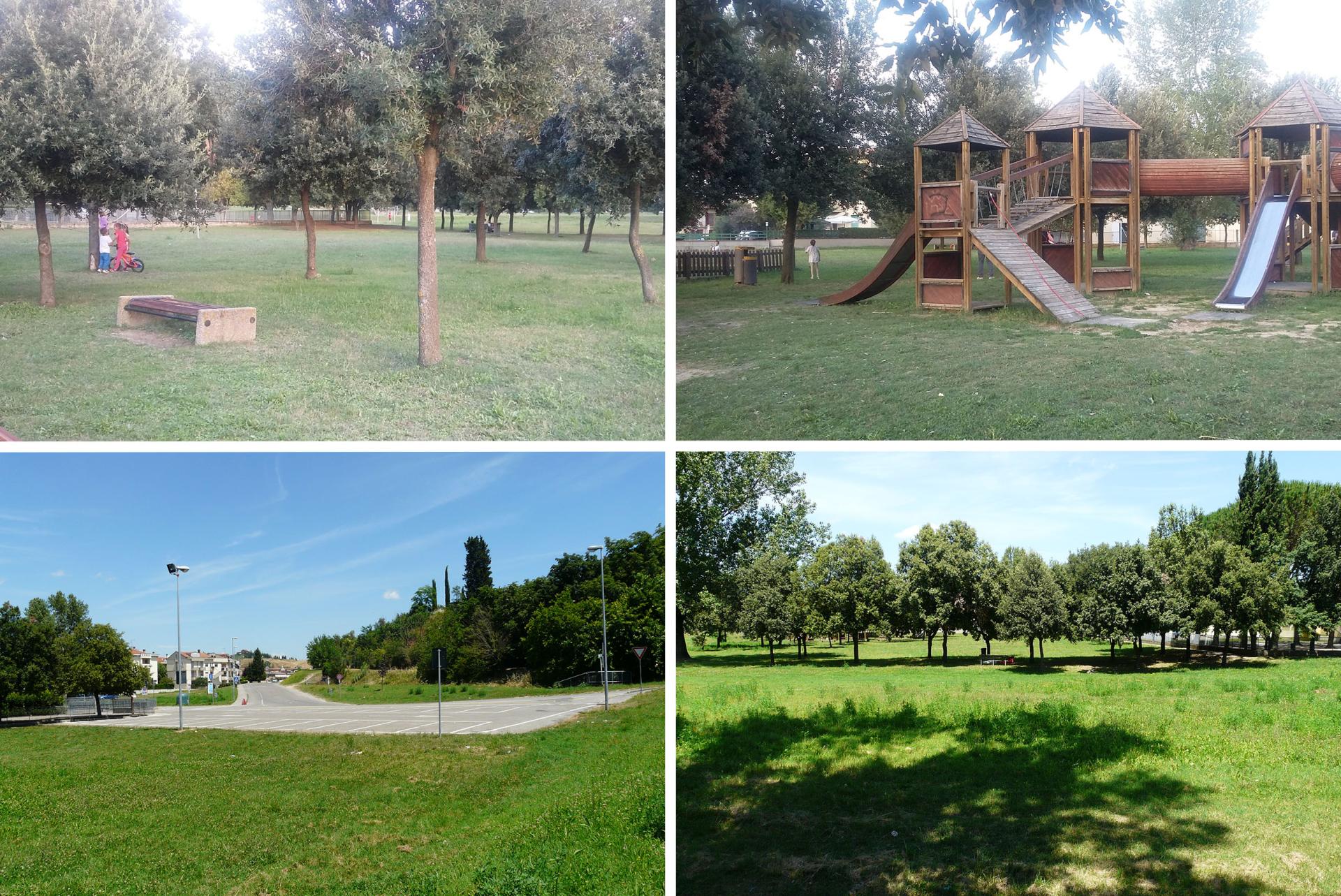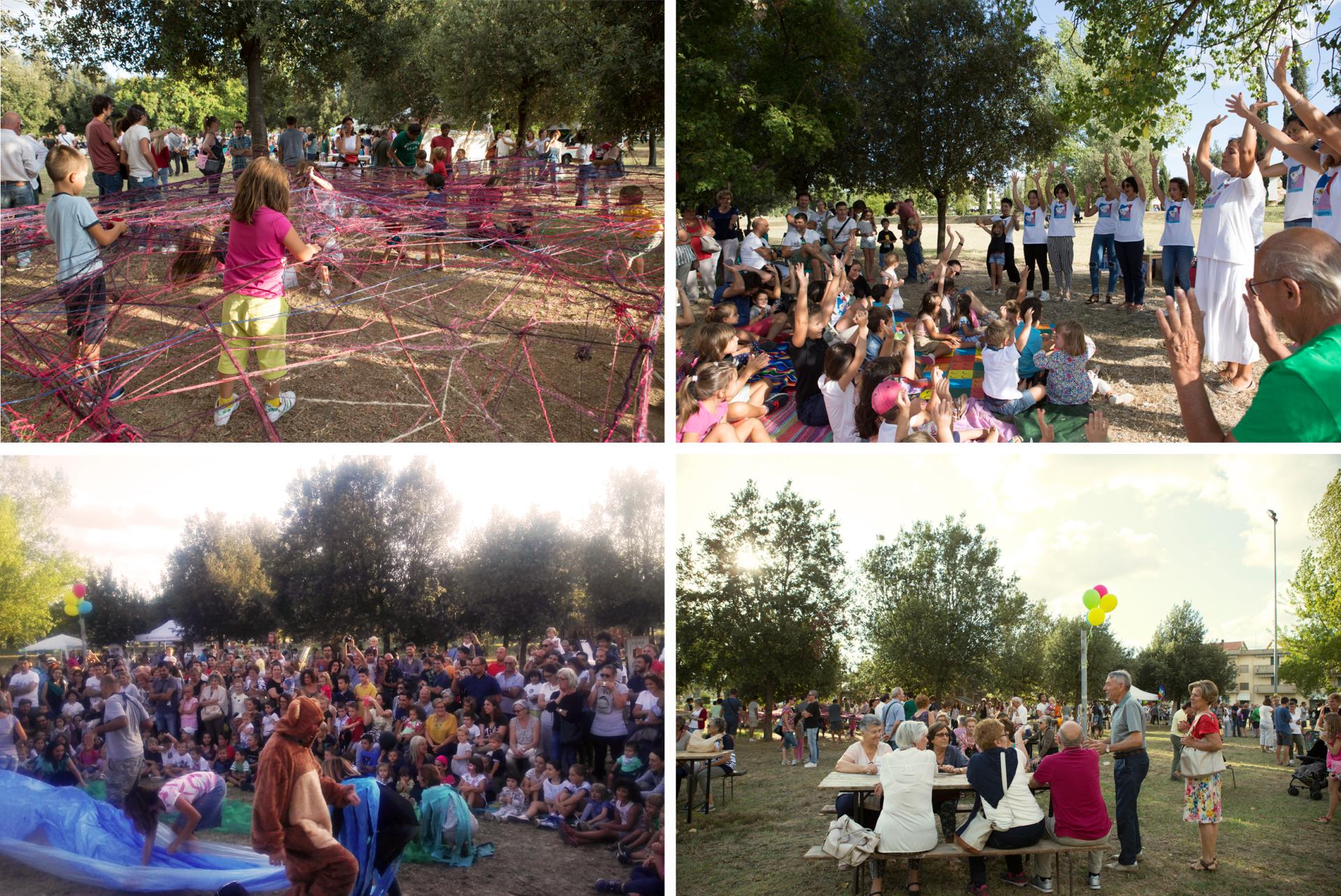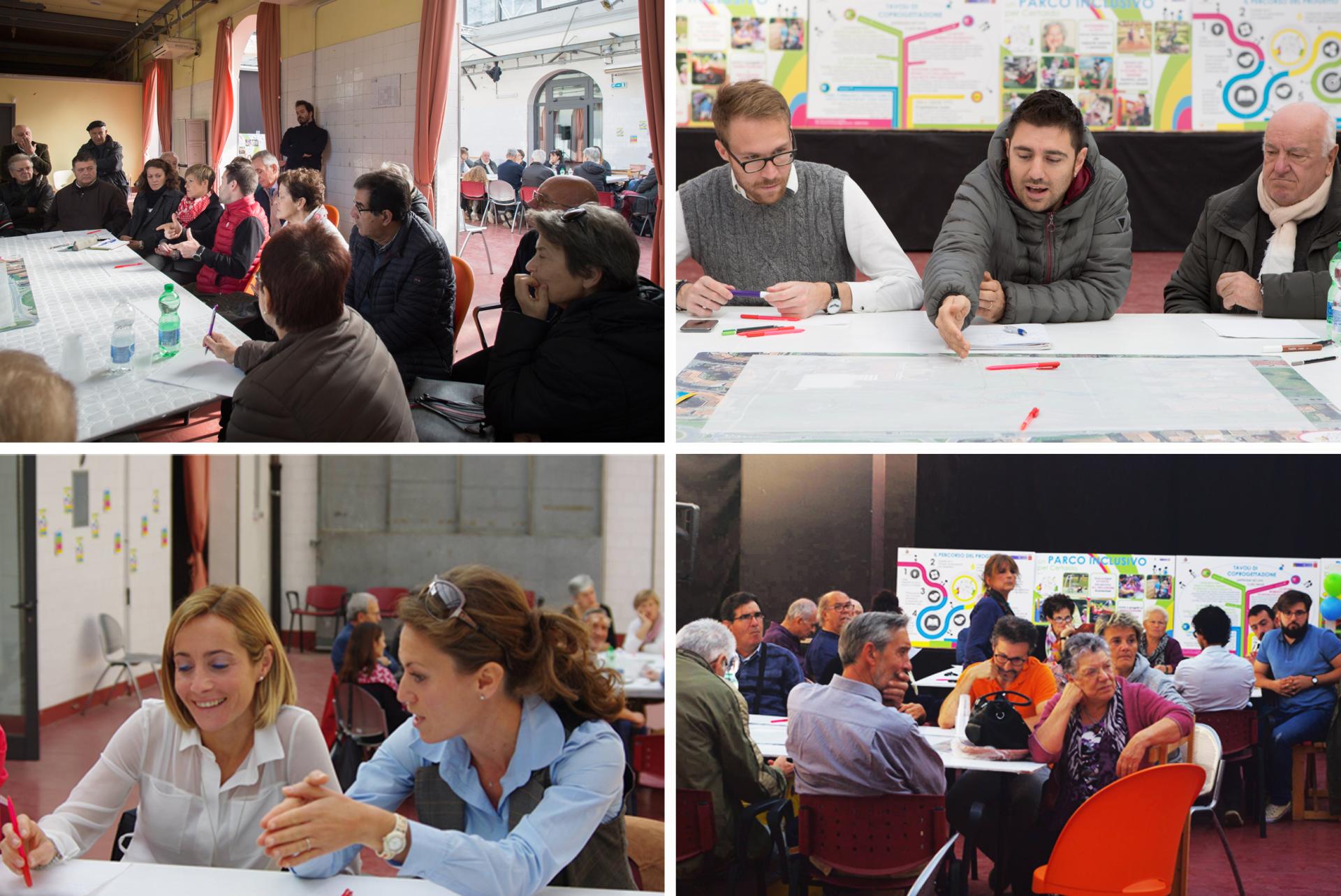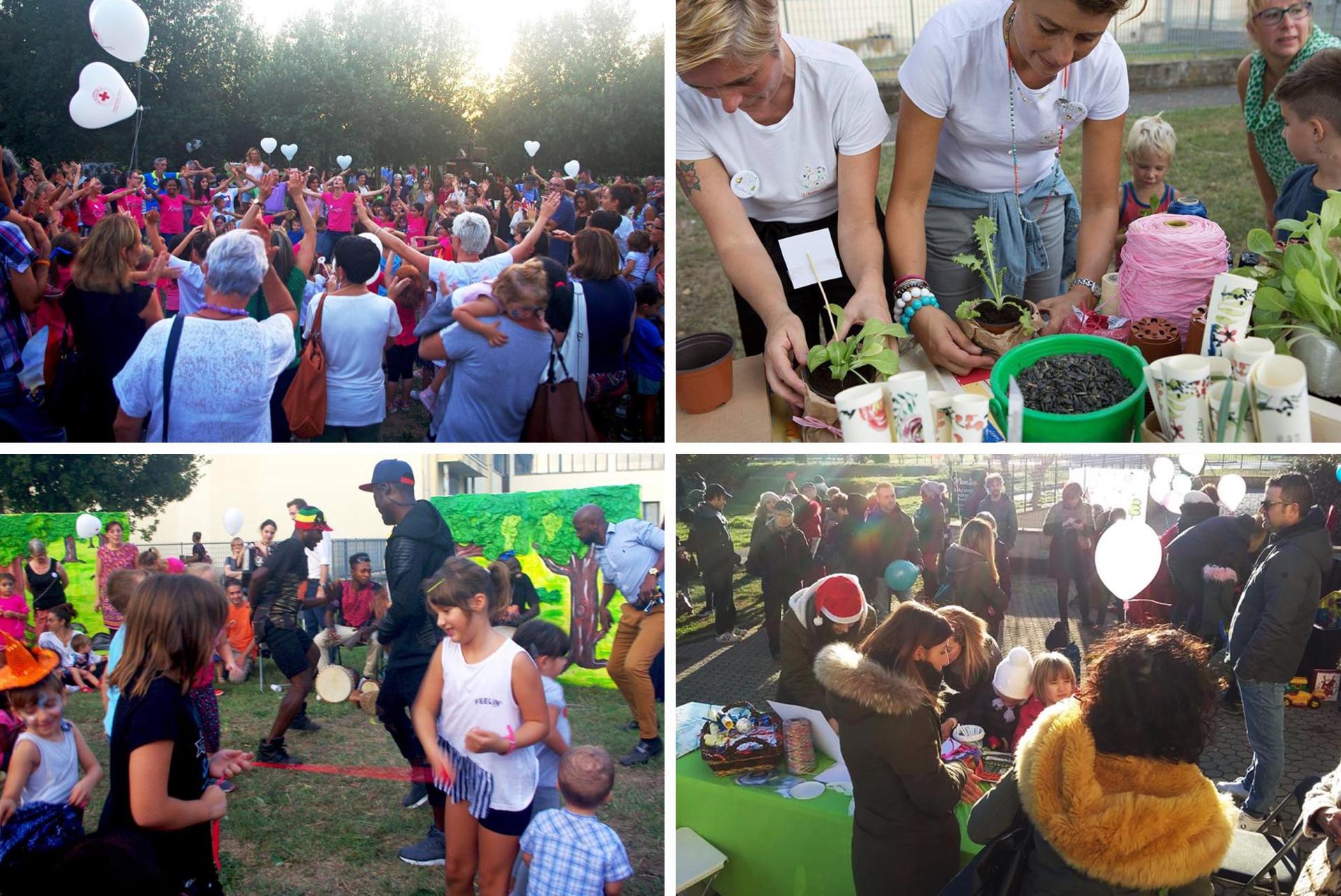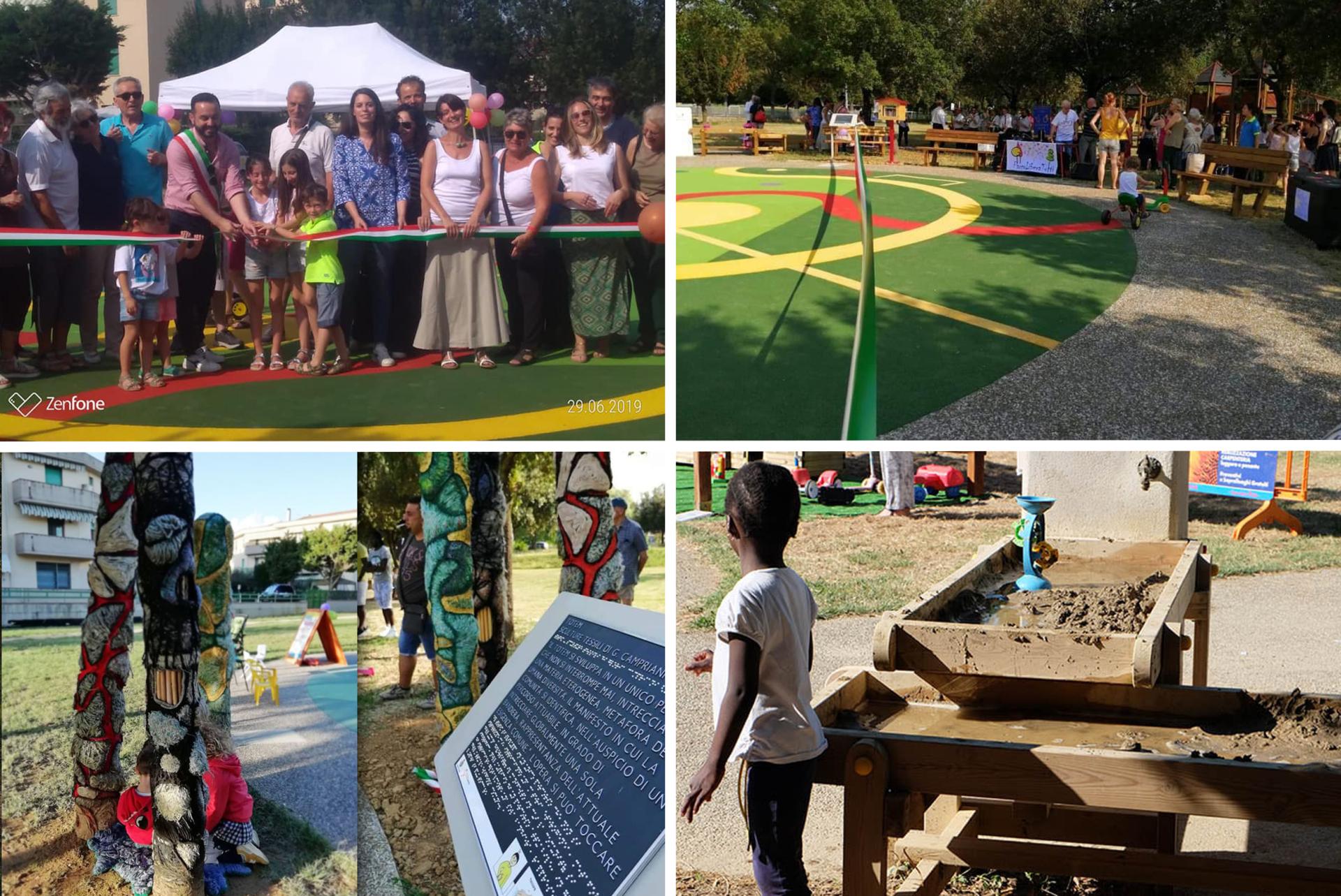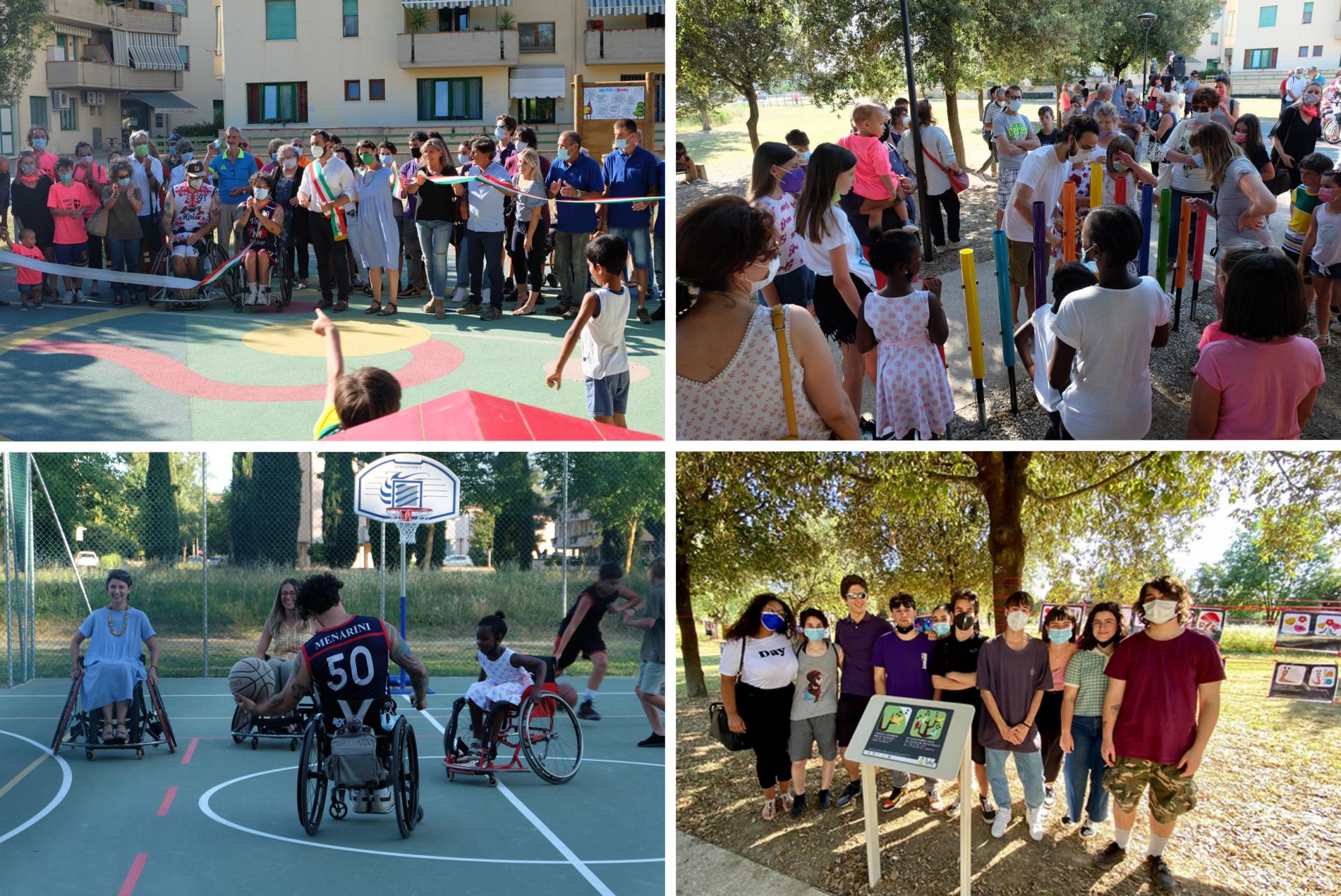Parco liberatutti. A park (free) for all
Basic information
Project Title
Full project title
Category
Project Description
“Parco Libera Tutti”, which can be translated into “A park (free) for all”, is an urban regeneration project which aim was the shared realization of an "Inclusive Park" in the largest green area of Certaldo (a small town in Tuscany): a place accessible to all without discrimination of age, motor, sensory or psychic skills; a place in which to carry out activities that promote social inclusion and intergenerational exchange.
Geographical Scope
Project Region
Urban or rural issues
Physical or other transformations
EU Programme or fund
Which funds
Description of the project
Summary
2017 - the starts
Narrazioni Urbane collected the requests of about 20 (now 50) city associations, proposing the redevelopment of the largest green area of the city currently underused, with the plan of turning it into an attractor of cohesion and social interaction and to create an "Inclusive Park": a place accessible to all without discrimination of age, motor, sensory or psychic skills; a place in which to carry out activities that promote social inclusion and intergenerational exchange.
2018 - the birth of the committee
The engagement of the stakeholder has generated a virtuous mechanism that, in 2018, has led to the birth of a committee of citizens and associations that will have the task of keeping the park and its inspiring principles alive indefinitely. In the following months, the committee has organised a wide range of activities and events in collaboration with other associations and individual citizens.
2019 - first inauguration
The spatial renewal of the park began in 2019, co-financed by the municipality and a banking foundation. The main outcome has been the creation of a new public space, a “central plaza”, a new vibrant gathering place for all the community, with benches and playground also accessible to children with physical and mental disabilities.
2021 - second inauguration
In 2021 a second main piece of furniture was added to the park, a multifunctional playground with adjustable basketball backboards that can be raised and lowered for athletes of all abilities. The playground can also be used as an outdoor cinema or for public outdoor events. Moreover, other pathways, playing and pic-nic areas have been created, easily accessible for wheelchair, strollers and disabled. The participation of citizens in the project has become very strong: some citizens donate a wooden house to contain toys and books while the graphics students of a local high school develop graphic solutions for tactile tiles for the visually impaired and blind.
Key objectives for sustainability
We focused our attention on the regeneration of the green area as a way to reorganise and upgrade an existing place rather than planning a completely new space. Therefore, natural elements have been preserved, respected and restored, and in some cases they are also transformed into play areas. However, sustainability in this project could be seen mainly in its social dimension. Efforts have been made to integrate in the decision making process all groups, irrespective of their social and economic situation, age, gender, cultural background, and physical skills. In fact, inclusion of the end user in the design process from the very beginning has increased the sustainability of the project. People who feel connected to the park are more likely to maintain it in good condition. As a result we now see in the park a lower risk of vandalism. Thanks to the co-design phase people got to know each other and established good neighbourly relations. In turn the projects have strengthened the personal connection of people with the town in general as they feel a part of the local community.
Key objectives for aesthetics and quality
We wanted to create a green space that people will want to use and respect. Therefore we also paid attention to the level of attractiveness of the park. For instance we used colourful safety surfacing, chosen by the stakeholder during the meeting. In particular, children expressed preferences about colours of the rubber floor located at the centre of the park and of the other facilities. The park is well linked with its surroundings, rooted in its past but rich with new facilities to respond to the changing demands and the emerging context (outdoor gym, horticulture). The park has two main focal spaces. The first is in the centre which offers flexibility for uses such as informal sport, events and community gatherings. The second is represented by the basketball accessible playground. However other smaller focal points can be found in the park, more intimate spaces surrounded by nature like grass and trees. Overall these different spaces provide diversity of experience.
Key objectives for inclusion
Inclusion is the key word of our project, both in terms of guiding principle and in terms of methods and tools that we have used. Participation and citizen engagement are, therefore, fundamental elements of this urban regeneration project. The master plan and concept plan for the park was created using input and ideas gathered through several public engagements as well as through individual face-to-face interviews with key players, such as disabled persons' associations and policy makers. This plan has been used to shape the park’s future, taking into consideration the interests expressed by the community. As an inclusive park, accessibility has been our primary goal. We have approached that issue from different points of views. From an architectural point of view we discussed with participants how to create a place “obstacle-free”, easy to access by wheelchair or strollers and in general for all the community. The pathways and the basketball playground are examples of this universal-design approach. From a social and cultural point of view our concern was to avoid other kinds of “barriers” which could exclude both disadvantaged and marginalised groups (elderly, immigrants and so on). The result is something unique in Italy. Although inclusive parks can be found in other cities of our country, none of those parks has been created through a co-creation process that has gathered voluntary organisation, associations, local civil society to identify needs, opportunities and solutions.
Results in relation to category
Material results are represented by all the accessible equipment installed in the park, such as the basketball playground, the benches, the pic-nic tables as well as the vegetable gardens. Many other things like the small library for the practice of the “book crossing” or the “free toy box” have been donated by the community itself, demonstrating the strong sense of belonging the process has created. Moreover, and most importantly, the process has created relevant social impacts. From this point of view, one of the main results is the spontaneous birth of a committee of citizens and associations that have the task of keeping the park and its inspiring principles alive indefinitely. We are really proud of them, as they animated the park well before the furniture were installed. In fact, in addition to the equipment, activities and events are at the centre of this inclusive park. They are promoted by several associations that organise outdoor courses in the fields of sport, education, culture and so on. All these activities have also increased around the park interest and acknowledgments from national institutions, such as The National Institute of Urban Planning. Also regional schools have been involved in small-scale activities in the park, with students from school of design creating maps and illustrations for the visually impaired.
How Citizens benefit
The active involvement of civil society groups has been a primary objective in this process of regeneration of the green area. In fact, over a long period, the inhabitants of the municipality and the representatives of the associations were consulted through interviews, video documentaries and group thematic discussions, to foster the emergence of numerous new ideas for the renovation of the area and for the activities to be held in it. Furthermore, to stimulate a greater sense of belonging, project managers have organized a crowdfunding, both online and through initiatives set up by local participants.
Between September and December 2017 has been organised four meetings that characterised the co-designing phase, that emerged from the belief that the richness and variety of the local associations and cooperatives would be the key to creating a lively park, able to respond to the real needs of users and to bring together ideas, desires and resources of community in the area. The observations that emerged during these phases were collected, studied in depth and then merged into a general architectural project which is nothing more than the graphic translation of the contents and wishes expressed by all the participants.
At the same time the crowdfunding campaign generated a strong sense of belonging to the project in all the community.
In this sense is quite illustrative the spontaneous birth of a committee of citizens and associations that will have the task of keeping the park and its inspiring principles alive indefinitely. Actually more about 50 associations are part of the committee and have already expressed their will to collaborate through the implementation of inclusive activities in order of their missions (disability, sport, promotion of the territory, sustainability, childhood, culture, art) will allow every citizen to feel represented and therefore to act on a truly inclusive level.
Physical or other transformations
Innovative character
The involvement of many associations, belonging to heterogeneous spheres of social and cultural life, has provided a voice to certain categories of citizens that too often remain excluded from the decision making process over the communities that they inhabit. Citizens with disabilities, teenagers, members of sport or artistic associations, in direct involvement or through the voice of spokespeople: everyone has collaborated in this inclusive process, with all-encompassing methods and goals. The first step in the park's architectural planning has taken place within the participatory process. A shared design led by architects and social researchers, aided by maps of the green area. The activities that will animate this park have been designed during these meetings, with the objective of inclusion as the key theme for the area. The complete project was presented to the Administration, which financed its implementation together with private fundraising, provided by local and online initiatives. Bringing the Administration closer to the citizens has generated a virtuous mechanism that has led to the birth of a committee of citizens and associations that will have the task of keeping the park and its inspiring principles alive indefinitely.
Learning transferred to other parties
The choice of a wide and symbolic objective has been one of the key elements for its success: the realisation of a place where physical and cultural barriers can be broken, diversity is valued as a positive resource, and which is capable of stimulating active citizenship. Another key strategy was the promise of its physical realisation at the conclusion of the process: the municipal government has immediately declared itself willing to co-finance the park, and the crowdfunding initiative has provided the missing resources to materialise this idea. Then, we strongly focus our attention on the willingness to reverse the custom of receiving projects “from above”, and instead working together on a concrete and feasible architectural project for a public work, with the help of administrators and the guidance of experts. Thanks to all these strategies, for instance, despite the end of the first financing of the participatory process, the project didn’t stop and a group of local actors has committed itself to following the future developments of the project, by keeping alive the collaboration with the Administration and between the participating subjects. Thanks to this commitment other funding was later collected allowing the regeneration of the rest of the park. Methodologically, we used a mix of tools from social research, architecture, urban planning and co-designing. We used face-to-face interviews with key actors to identify priorities, to capture energies and wishes regarding the projects but also as a way to engage directly people and to maximise participation. We combined interviews with free conversation with users of the park especially during celebration events designed to draw in as many locals as possible for a fun day with food and activities. Co-designing was the central part of the process. People engaged through the tools mentioned above met around a table in order to discuss ideas for the masterplan. We also used a project branding that made curiosity.

